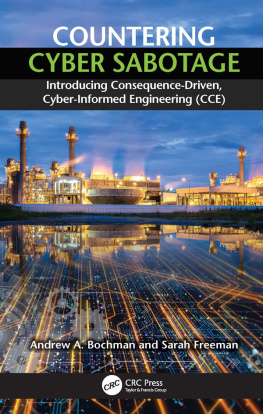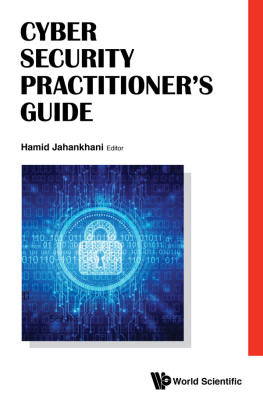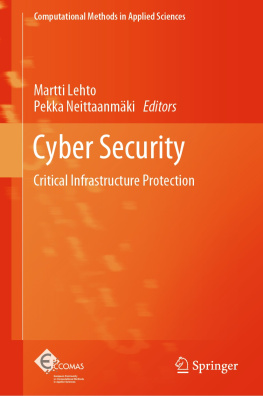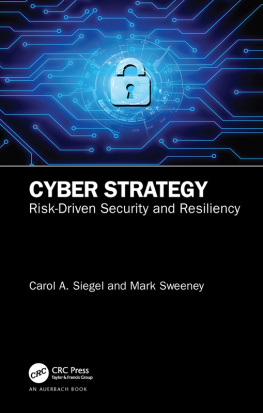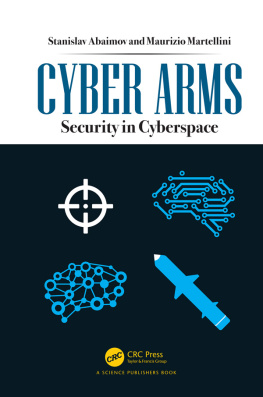Andrew A. Bochman - Countering Cyber Sabotage: Introducing Consequence-Driven, Cyber-Informed Engineering (CCE)
Here you can read online Andrew A. Bochman - Countering Cyber Sabotage: Introducing Consequence-Driven, Cyber-Informed Engineering (CCE) full text of the book (entire story) in english for free. Download pdf and epub, get meaning, cover and reviews about this ebook. year: 2021, publisher: CRC Press, genre: Politics. Description of the work, (preface) as well as reviews are available. Best literature library LitArk.com created for fans of good reading and offers a wide selection of genres:
Romance novel
Science fiction
Adventure
Detective
Science
History
Home and family
Prose
Art
Politics
Computer
Non-fiction
Religion
Business
Children
Humor
Choose a favorite category and find really read worthwhile books. Enjoy immersion in the world of imagination, feel the emotions of the characters or learn something new for yourself, make an fascinating discovery.
- Book:Countering Cyber Sabotage: Introducing Consequence-Driven, Cyber-Informed Engineering (CCE)
- Author:
- Publisher:CRC Press
- Genre:
- Year:2021
- Rating:5 / 5
- Favourites:Add to favourites
- Your mark:
Countering Cyber Sabotage: Introducing Consequence-Driven, Cyber-Informed Engineering (CCE): summary, description and annotation
We offer to read an annotation, description, summary or preface (depends on what the author of the book "Countering Cyber Sabotage: Introducing Consequence-Driven, Cyber-Informed Engineering (CCE)" wrote himself). If you haven't found the necessary information about the book — write in the comments, we will try to find it.
Countering Cyber Sabotage: Introducing Consequence-Driven, Cyber-Informed Engineering (CCE) introduces a new methodology to help critical infrastructure owners, operators and their security practitioners make demonstrable improvements in securing their most important functions and processes.
Current best practice approaches to cyber defense struggle to stop targeted attackers from creating potentially catastrophic results. From a national security perspective, it is not just the damage to the military, the economy, or essential critical infrastructure companies that is a concern. It is the cumulative, downstream effects from potential regional blackouts, military mission kills, transportation stoppages, water delivery or treatment issues, and so on. CCE is a validation that engineering first principles can be applied to the most important cybersecurity challenges and in so doing, protect organizations in ways current approaches do not. The most pressing threat is cyber-enabled sabotage, and CCE begins with the assumption that well-resourced, adaptive adversaries are already in and have been for some time, undetected and perhaps undetectable.
Chapter 1 recaps the current and near-future states of digital technologies in critical infrastructure and the implications of our near-total dependence on them. Chapters 2 and 3 describe the origins of the methodology and set the stage for the more in-depth examination that follows. Chapter 4 describes how to prepare for an engagement, and chapters 5-8 address each of the four phases. The CCE phase chapters take the reader on a more granular walkthrough of the methodology with examples from the field, phase objectives, and the steps to take in each phase. Concluding chapter 9 covers training options and looks towards a future where these concepts are scaled more broadly.
Andrew A. Bochman: author's other books
Who wrote Countering Cyber Sabotage: Introducing Consequence-Driven, Cyber-Informed Engineering (CCE)? Find out the surname, the name of the author of the book and a list of all author's works by series.

